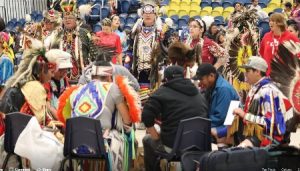Journal Articles: October 2018
Mulrennan, M., & Bussières, V. (2018). Social-ecological resilience in indigenous coastal edge contexts. Ecology and Society, 23(3).
Abstract
Cultural edges, as sites of encounter and interaction between two or more cultural groups, tend to result in increased access to knowledge, skills, and material goods. First proposed more than a decade ago as an elaboration of the ecological edge concept, we suggest that cultural edges merit closer attention, particularly in relation to the complex histories and diverse processes of interaction indigenous communities have had with outsiders, including settlers and other indigenous groups. Our analysis is focused on the coastal Cree Nation of Wemindji, Eeyou Istchee, northern Québec (Canada) where multiple ecological and cultural edges have provided increased access to harvesting resources as well as expanded opportunities for social interaction and partnerships, knowledge and technology transfer, and economic diversification. As the locus within indigenous social-ecological systems where strategies for resistance and adaptation to disturbance and change are applied, including active enhancement of edge benefits, the concept of edges contributes to our understanding of the social, cultural, and ecological processes that shape indigenous territories and contribute to enhanced social-ecological resilience.
O’Donoghue, C., & Dekkers, G. (2018). Increasing the Impact of Dynamic Microsimulation Modelling. International Journal of Microsimulation, 11(1), 61–96.
 Abstract
Abstract
This paper considers the degree of progress made by the field of dynamic microsimulation over the past five decades. It highlights the expanding breadth of the field, both in terms of the number of countries and in terms of the broadening policy area. It also outlines concerns in relation to lack of emphasis historically in relation to the transmission of codified and in the sometimes-proprietary ownership model. Moving forward, an improved focus on the codification and peer review of methodologies used in the field is suggested. In terms of tacit knowledge transmission, the organisation of more regional meetings of the International Microsimulation Association is encouraged.
In terms of future areas for model development, the opportunities are to incorporate behaviour to a greater extent, utilise more data in the big data revolution, to increase the field of microsimulation into new policy areas, and to share code and work in networks. Finally, the role of peer review is highlighted.

